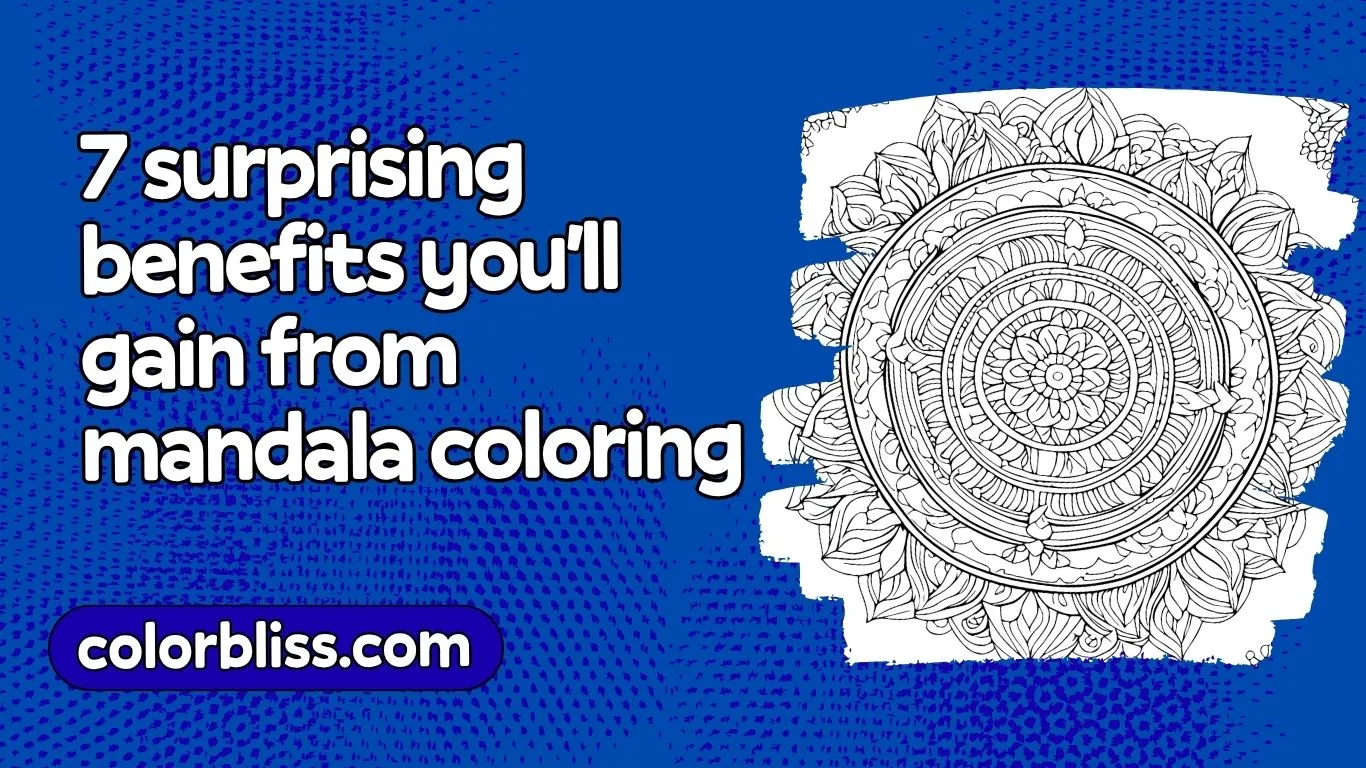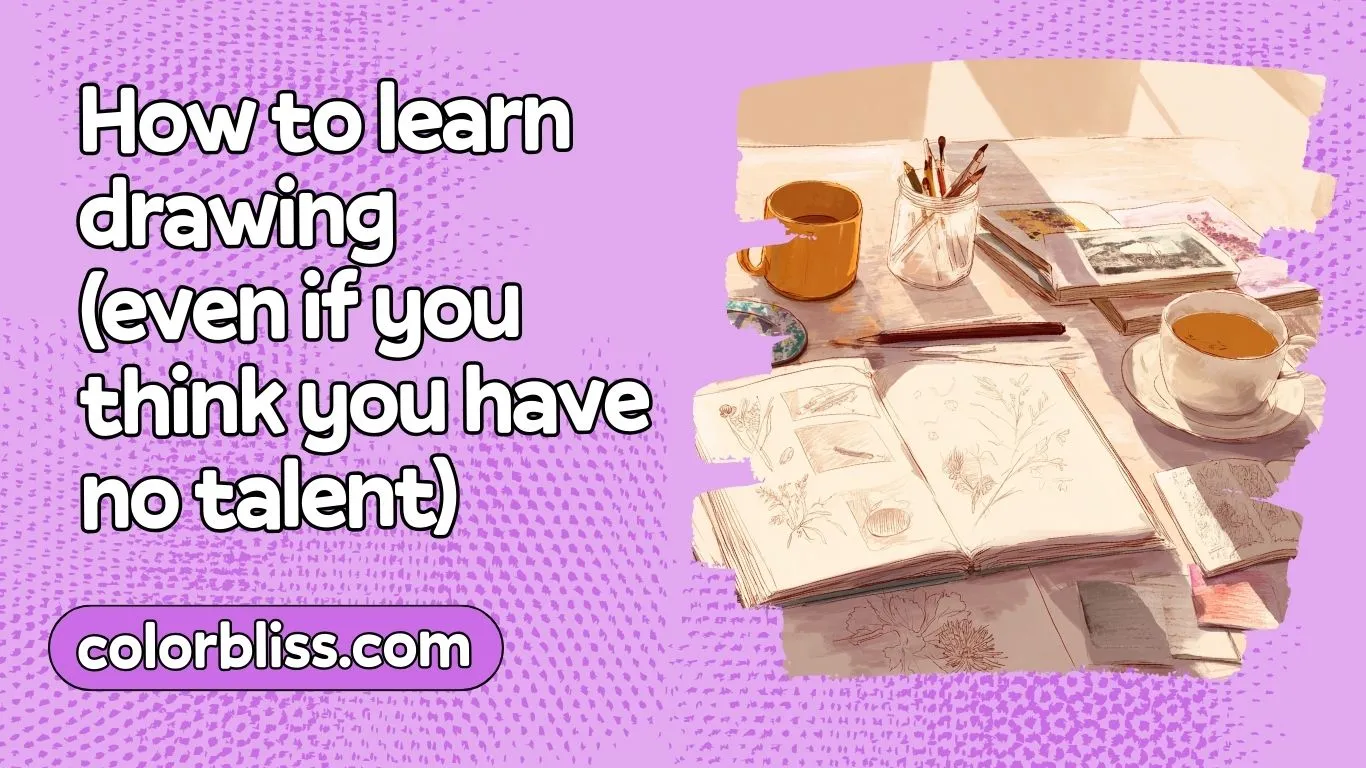7 surprising benefits you’ll gain from mandala coloring

Your mind won’t shut off. Your to-do list keeps growing. You’ve tried meditation apps, breathing exercises, even adult coloring books. But there’s something about mandala coloring that hits different.
Maybe it’s the symmetrical patterns. Maybe it’s the way your brain switches off when you focus on those intricate geometric designs. Or maybe it’s because you’re tapping into something that’s been helping people find peace for thousands of years.
Whatever it is, mandala coloring works. And the benefits go way deeper than you’d expect.
What makes mandalas special?
A mandala isn’t just a circular design you fill with colored pencils. The word comes from Sanskrit and means “circle” or “completion”. In Buddhism and Hinduism, mandalas represent the universe itself.
Look at a mandala and you’ll see something unique. There’s always a center point. From there, patterns radiate outward in perfect symmetry. These circular designs create balance. They draw your eye inward, toward that central point, creating a natural focal point for meditation practice.
Carl Jung, the famous psychiatrist, noticed his patients kept drawing circular patterns during therapy sessions. He realized mandalas were showing up in dreams and art across cultures. Jung saw them as symbols of wholeness and self-awareness – a visual representation of the self trying to integrate and heal.
Tibetan Buddhist monks spend days creating sand mandalas, grain by grain. Then they destroy them. It’s a reminder that nothing lasts forever. That impermanence is part of what makes mandala art so powerful – it teaches you to focus on the process, not just the result.
The seven benefits that’ll surprise you
Let’s get into what actually happens when you sit down with a mandala coloring book and some crayons.
1. Your stress actually drops (measurably)
You know that tight feeling in your chest when everything feels overwhelming? Mandala coloring addresses that directly.
Research published in Art Therapy: Journal of the American Art Therapy Association found that coloring mandalas reduced anxiety more than coloring other designs. The study measured cortisol levels – that’s your body’s main stress hormone. After mandala coloring sessions, cortisol dropped significantly.
Why mandalas specifically? The symmetrical patterns activate both hemispheres of your brain. This bilateral stimulation creates a meditative state that slows your heart rate and lowers blood pressure. It’s similar to what happens during traditional meditation practice, but easier to access if sitting still makes you antsy.
The repetitive nature of filling in intricate patterns triggers your parasympathetic nervous system. That’s your “rest and digest” mode. Your breathing slows. Your muscles relax. The stress doesn’t just disappear from your mind – your whole body calms down.
Many people find coloring reduces stress and anxiety better than other activities because it occupies your hands and eyes simultaneously. Your mind can’t race ahead to tomorrow’s problems when you’re focused on the present moment of choosing colors and staying within those geometric lines.
2. Your brain gets better at focusing
How long can you concentrate on one thing before checking your phone? For most people, it’s not long.
Mandala coloring trains your attention span. The intricate patterns demand sustained focus. You can’t rush through a detailed mandala design – it requires patience and presence. This focused attention strengthens your cognitive function over time.
Art therapists call this “active meditation.” You’re fully engaged but relaxed. Your mind isn’t wandering or multitasking. It’s locked into the task at hand.
Unlike passive activities like watching TV, coloring mandalas requires problem-solving. Which colors go where? How do you create depth? These small decisions keep your brain engaged without overwhelming it.
Studies in psychiatry journals have shown that participants who colored mandalas showed improved concentration in other areas of life. The focused practice carries over. You’re essentially doing mental exercises that build your attention muscles.
3. You express yourself without saying a word
Not everyone can put their feelings into words. That’s where art-making comes in.
When you choose colors for your mandala, you’re making choices based on emotion. Blue might feel calm today. Red might express anger or energy. You’re engaging in self-expression without needing to articulate why.
Art therapists use mandala coloring as a therapeutic tool bc it provides a safe container for emotional exploration. The circular design offers boundaries – you know where to start and stop. But within those boundaries, you have complete creative freedom.
Creating mandalas (or coloring them) taps into something deeper than conscious thought. Jung believed mandalas emerged from the unconscious mind as symbols of psychological integration. By engaging with these patterns, you’re having a dialogue with parts of yourself that might not have a voice otherwise.
You don’t need to be “artistic” or talented. The structure is already there. You just add color. This removes the fear of a blank page while still allowing genuine creativity and personal growth.
4. Emotional healing happens quietly
Therapy isn’t always about talking. Sometimes healing happens through doing.
In a study comparing stress management interventions, researchers found that the intervention group using mandala coloring showed significant improvements in emotional well-being compared to other coloring activities. The circular, symmetrical nature of mandalas creates a sense of containment that feels psychologically safe.
When you color a mandala, you’re creating order from chaos. That external process mirrors internal work. As you bring harmony to the page, something shifts inside.
Art therapy research shows that working with mandalas can help process trauma, grief, and difficult emotions that feel too big for words. The geometric designs provide structure while you work through what’s underneath.
Many people report feeling lighter after a mandala coloring session. Not bc their problems disappeared, but bc they found a way to externalize what they were carrying. The act of making something beautiful from your emotional state – whatever that state is – validates your experience.
This isn’t about forced positivity. It’s about acknowledgment. Your feelings get translated into color and pattern. They become something you can see and work with rather than something overwhelming happening inside your head.
5. You get actually present (not just trying to be)
Mindfulness apps keep telling you to “be here now.” Mandala coloring makes it happen without trying.
When you’re choosing between shades of blue, deciding how to shade a particular section, or figuring out your next color choice, you’re fully in the present moment. There’s no room for your brain to drift to past regrets or future worries.
This is what meditation teachers mean by “flow state.” You lose track of time. Your self-consciousness fades. You’re just… doing.
Buddhist monks have used mandalas as meditation tools for centuries bc the patterns naturally draw your attention inward. The center of the mandala becomes a focal point, much like the breath in traditional meditation. But unlike sitting meditation, you have something to do with your hands.
The coloring activities engage your senses. The texture of paper, the smell of colored pencils, the visual feedback as colors fill the page. This multi-sensory engagement keeps you anchored in physical reality, pulling you out of your head.
6. Your hands get stronger and more precise
Grip a colored pencil. Fill in a tiny space between lines. Switch to a different color. Blend two shades together. Repeat.
These small movements improve fine motor skills. Your hand-eye coordination sharpens. The precise control needed to color intricate patterns is actual physical training.
This matters more than you’d think. Fine motor skills decline with age or disuse. Regular practice keeps your hands nimble and your grip strong. Art therapists use mandala coloring with stroke patients for exactly this reason – it rebuilds neural pathways while providing motivation to practice.
For anyone dealing with arthritis, recovering from injury, or just noticing their handwriting isn’t what it used to be, mandala coloring offers a pleasant way to maintain dexterity.
Plus, the focused hand movements have a neurological benefit. The connection between hand and brain is profound. When you engage in detailed manual work, you’re strengthening cognitive pathways too.
7. You get a break from screens that actually works
Your eyes hurt. Your neck is stiff. You’ve been staring at screens all day and you know you should stop, but what else is there to do?
Mandala coloring gives you something to do that doesn’t involve more screen time. It’s a genuine digital detox – no notifications, no blue light, no temptation to multitask.
Adult coloring books have surged in popularity partly bc people are desperate for screen-free activities that don’t feel boring. You’re not just “not using your phone.” You’re actively engaged in something that feels worthwhile.
The tactile experience matters. Holding actual colored pencils or crayons, feeling the texture of paper, seeing color appear from your own hand – it’s grounding in a way that digital activities can’t match.
Research on well-being consistently shows that time away from screens improves mental health, sleep quality, and overall life satisfaction. Mandala coloring provides a compelling reason to put the phone down, not just a guilt trip about screen time.
Getting started with mandala coloring
You don’t need much to begin. Grab what you have and start simple.
Pick your mandala
Start with designs that appeal to you. Complicated patterns can be satisfying, but they’re not required. Simple mandalas work just as well for stress relief and mental health benefits.
Free printable mandala coloring pages are everywhere online. Search for “free mandala coloring pages” and you’ll find thousands. Or pick up a mandala coloring book at any bookstore.
Don’t overthink the selection. If a design catches your eye, that’s the one.
Gather your tools
Colored pencils are popular bc they give you control. You can blend, shade, and layer colors. Crayons work great too – they’re nostalgic and satisfying to use. Some people prefer markers or gel pens for bold, solid colors.
No wrong answers here. Use what you have or what appeals to you.
Set up your space
You don’t need a special meditation room. Just find somewhere comfortable where you won’t be interrupted for 15-30 minutes.
Good lighting helps – you want to see what you’re doing without straining. Some people like background music. Others prefer silence. Do a few test sessions and see what helps you get into that flow state.
Let go of perfect
This is the most important part. There’s no “right” way to color a mandala. The benefits of mandalas come from the process, not the finished product.
Colors bleeding outside the lines? That’s fine. Don’t like how a section turned out? Keep going anyway. The act of doing is what matters, not creating something Instagram-worthy.
Many people find their first attempt feels awkward. That’s normal. Your brain is used to evaluating everything you do. Give yourself permission to just color without judgment. That’s where the self-care and stress reduction happen.
Try these mandala coloring ideas
Want to make your practice more personal? Here are some ways to deepen your connection with mandala art.
Create from photos
You can turn personal photos into coloring pages that incorporate mandala-style patterns. A family photo, your pet, a meaningful place – transforming these into coloring pages adds emotional significance to the practice.
When you’re coloring something personally meaningful, the therapeutic tool becomes even more powerful. You’re not just reducing stress; you’re engaging with memories and relationships through color and pattern.
Design your own mandala
Creating mandalas from scratch takes the benefits to another level. You don’t need artistic training – just a compass, ruler, and paper.
Start with a center point. Draw circles radiating outward. Add symmetrical patterns between the circles. Repeat shapes, create balance, let your intuition guide you.
Mandala drawing engages your brain differently than coloring. You’re making decisions about structure and flow. It’s meditative in a different way – more active, more about bringing something from imagination into reality.
Keep a mandala journal
Some people maintain a “mandala diary” where they create or color one mandala per day. The designs become a visual record of emotional states over time.
Looking back through a mandala journal, you might notice patterns. Certain colors appear when you’re stressed. Specific designs emerge during periods of growth or change. It becomes a tool for self-awareness without requiring written reflection.
Try a doodle approach
Not ready for structured mandala designs? Start with a doodle. Draw a circle. Fill it with whatever shapes come to mind. There’s no pressure to create perfect symmetry.
This freeform approach still captures the essence of mandala art – the circular container, the focus on pattern, the meditative quality of repetitive mark-making. Sometimes the most healing mandalas are the ones you create without planning.
Start where you are
The benefits of mandala coloring are real and accessible. You don’t need to understand the full history of mandalas in Buddhism or become an expert in art therapy. You just need to try it.
Download a free design or grab a mandala coloring book. Get some colored pencils or crayons. Set aside 20 minutes. See what happens.
Your own mandala practice doesn’t have to look like anyone else’s. The circular designs and symmetrical patterns will do their work regardless of your skill level or artistic background.
Mental health and well-being aren’t destinations you reach. They’re ongoing practices. Mandala coloring offers one more tool for that journey – an ancient practice that still works in our modern, overstimulated world.
Give it a shot. Your stressed-out brain will thank you.

